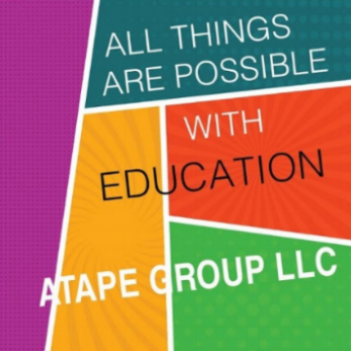Teaching for Equity | Yes, we can teach our way to educational equity
Recently in a conversation about education reform, a colleague explained that she doesn’t believe we can teach our way to educational equity. My heart sank. The forces of inequity loom large in our society and I understand her perspective. Without economic equality, without radically undermining structural and institutional racism, without dismantling white supremacy, without changing public will around the role, purpose and cost of public education, it is hard to imagine that schools alone will reverse history.
Yet, at ATAPE Group we come from a place of deep belief that what individual teachers do in individual classrooms with individual students matters. We believe that classrooms and schools can make a difference for individual lives, for families and for communities.
Teaching for equity is not easy but anything else isn’t really teaching. Fortunately, there are more and more examples of teachers who embrace a culturally relevant, culturally sustaining and inclusive pedagogy and examples of the young people who thrive in their classrooms. We know a lot about the perspectives, knowledge and skills teachers need to teach for educational equity. At ATAPE Group we have identified three essential starting places:
Teachers must believe in the unlimited potential of every student. This requires teachers to take an honest—and sometimes uncomfortable—look at how their prior experiences and cultural messaging have impacted their conscious and unconscious belief systems, to identify what deficit perspectives they hold and to ask themselves which students challenge their belief that every child can learn. This also means that teachers need to continually develop their instructional skills because we know from research and experience that the more confident a teacher is in her ability to meet the needs of challenging students, the more likely she is to regard those students from an asset-based perspective.
Teachers must understand how the twin forces of implicit bias and structural inequity inform their students’ lives, their own pedagogy and schooling in general. In order to meet the learning needs of each student, teachers need to see their students as individuals who exist within a cultural context. When teachers recognize that schools reflect and perpetuate the marginalization of people of color, people living in poverty, people labeled with disabilities, they can navigate the pressures and demands of teaching in the current climate to build their students’ critical consciousness, to uplift young people and to nurture future leaders who can imagine and create an equitable world.
Teachers must belong to an empowering culture of learning where they engage in ongoing professional learning, regularly reflect on their practice and are encouraged to take risks to innovate. Ideally teachers can find this culture of learning in their own schools, but if they can’t, they need to find networks or organizations that support their continuous learning and development.
When teachers internalize and act on their conviction that every student can be successful, when teachers understand the systemic and specific barriers their students face, and when teachers belong to communities that support and push them, they can teach for educational equity. We know that equity-driven teaching can disrupt the predictive pattern of demographics for individual students, but there’s an impact beyond single student success stories: teachers who believe they can teach for equity cultivate future leaders with the knowledge, skills and disposition to imagine and create an equitable world for all. We can teach for educational equity. We must.
Contact ATAPE Group so we can support you as you lead for equity.
